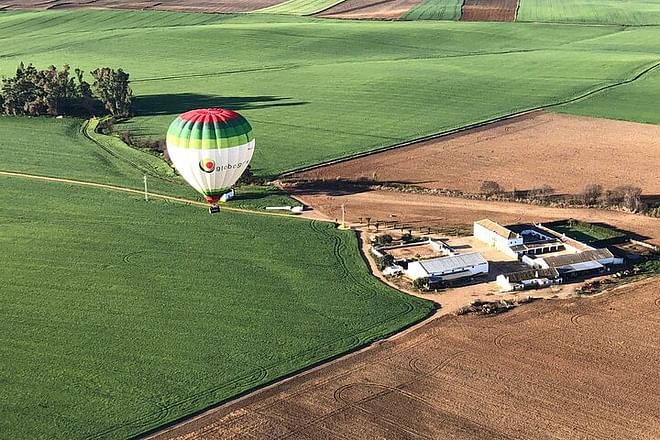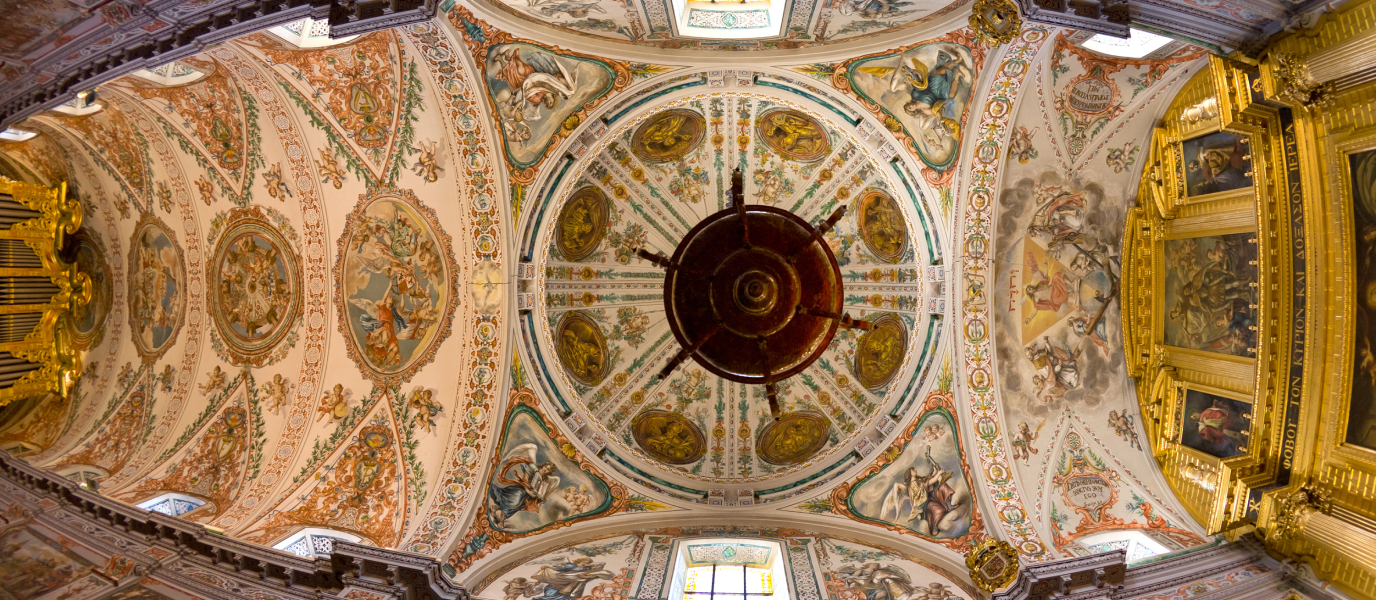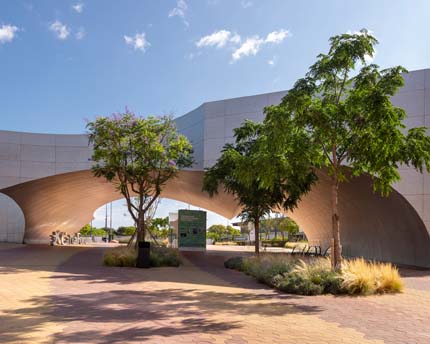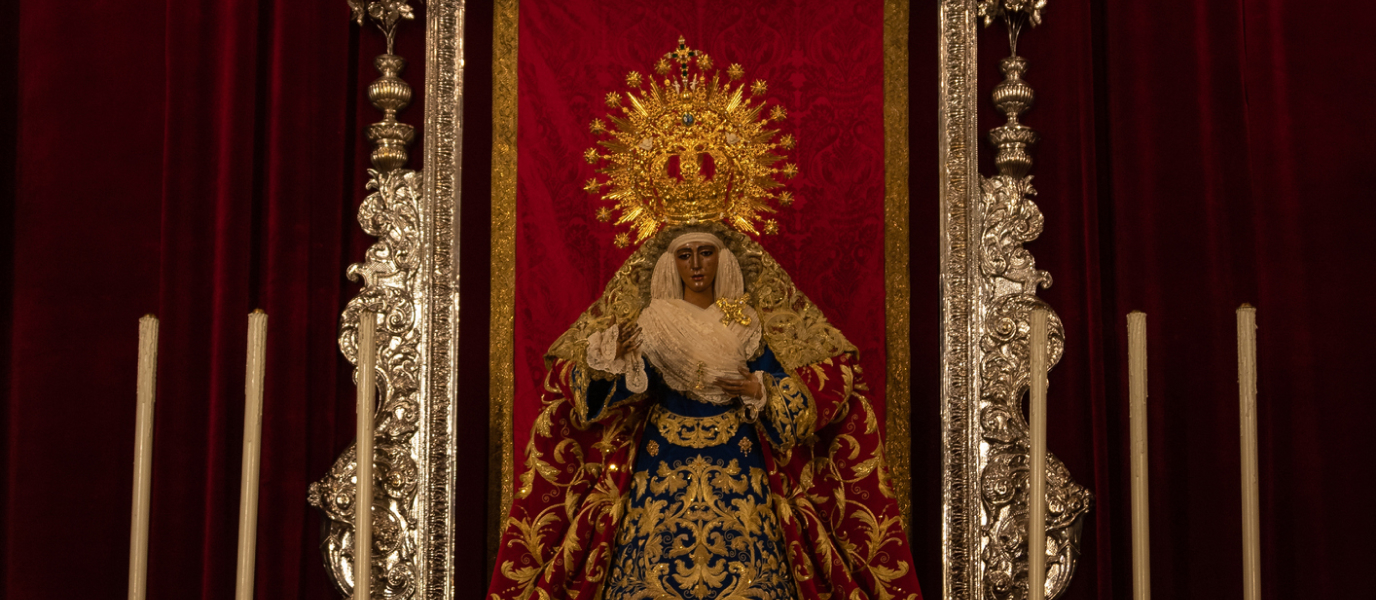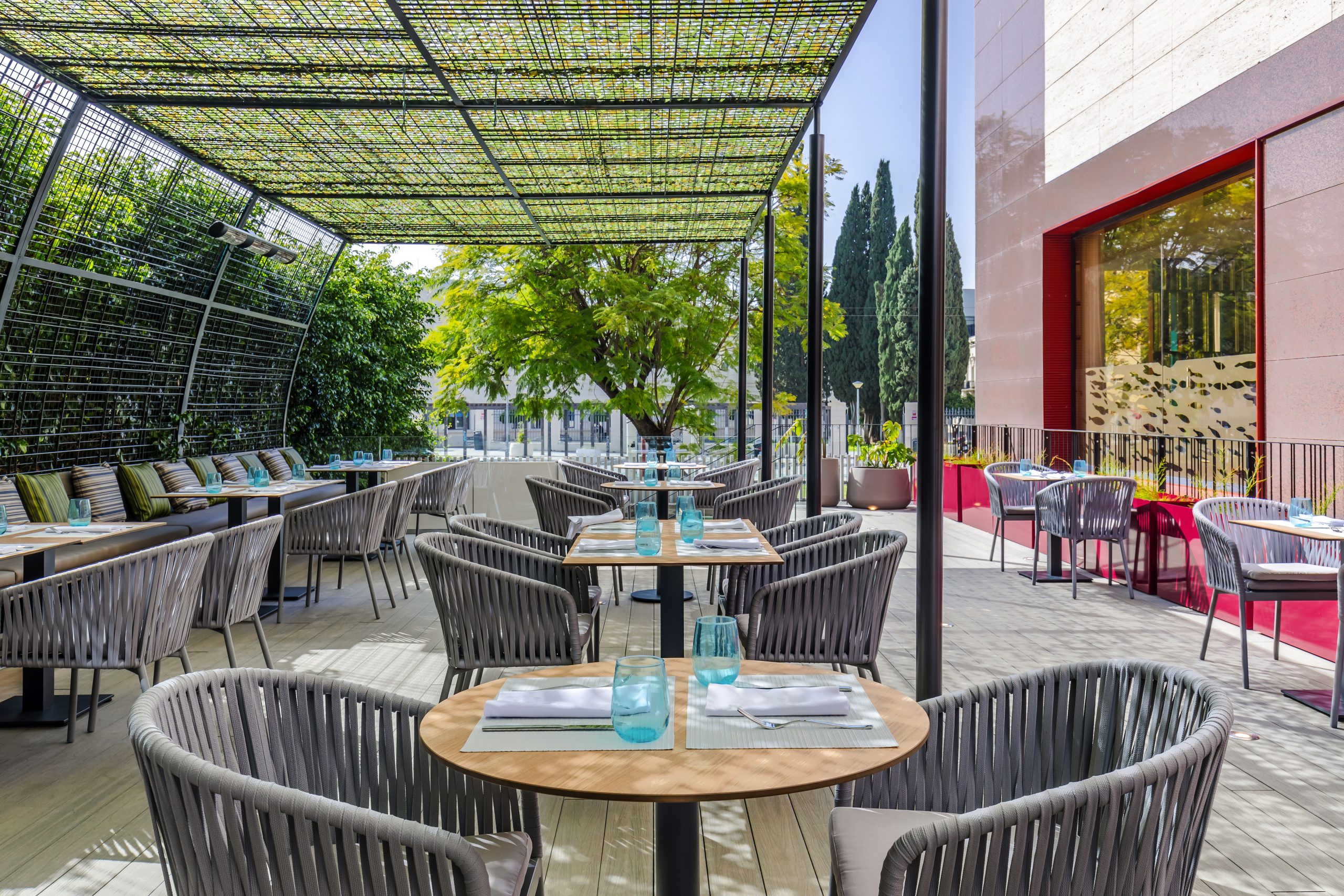There is a song that says that “Seville has a special colour”; in fact the city has not just one colour, but a plethora of colours. Every nook has its own distinct character and every street holds a surprise.
This is an exquisite city, wherever you look. The magical quality of its light, its smell of orange blossom, and its atmosphere — all linger in the memory. It has art, the indefinable quality known here as ‘duende’, flamenco, culture… and a fascinating history that is reflected in its many monuments.
Some would go so far as to say it is one of the world’s most beautiful cities. In any case, it is a source of unforgettable experiences, because there is so much you can do in Seville.
If you’re planning a visit to Seville, we can help you to make a list of the places to visit in the city — a selection that will enable you to discover all its wonders and best-kept secrets.
Places not to be missed in Seville
Related experiences
1. Seville Cathedral and the Giralda Tower
Seville’s Cathedral is one of the largest Gothic churches in the world. Imposing and beautiful, it stands in the heart of the city, and it is worth a visit, if only to admire its façade. With several porticoes, and a truly splendid interior, the cathedral was built on the site occupied by an Almohad mosque in 1401 — although construction took over a hundred years, due to the scale of the edifice. Make sure you don’t miss the High Chapel, the collections of jewellery and paintings, or the tomb of Christopher Columbus. Justifiably, the Cathedral has been declared a UNESCO World Heritage Site.
Next to the Cathedral, its 104-metre-tall belltower, the Giralda, watches over the city of Seville. It was once the minaret of the Moorish mosque which stood on the same site. La Giralda has been subject to significant changes throughout its history, particularly when the city passed from Moorish to Christian rule. An upper section was added to house 24 bells, making this the belltower with the largest number of bells in Spain. If you climb to the top, you will enjoy breathtaking views. The famous ‘Giraldillo’ is its weather vane, a sculpture over 3 metres high which symbolises the triumph of Christianity over Islam. Avenida de la Constitución, s/n.
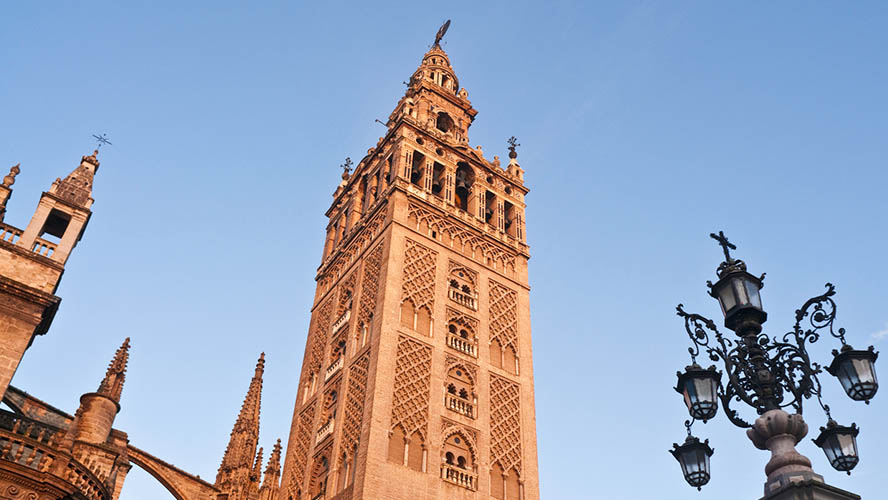
2. Seville’s Plaza de España
This square was built in 1928 in preparation for the 1929 Ibero-American Exhibition to commemorate the Discovery of America. The Plaza de España is circular, and consists of several channels along which small boats can be sailed. Four bridges symbolise the ancient kingdoms of Spain, and the square has arcades and fountains, as well as the 48 famous benches representing each of Spain’s provinces. This public monument has provided the setting for many series and films, including ‘Star Wars’, and the design of the tiles that decorate it has been seen all around the world.
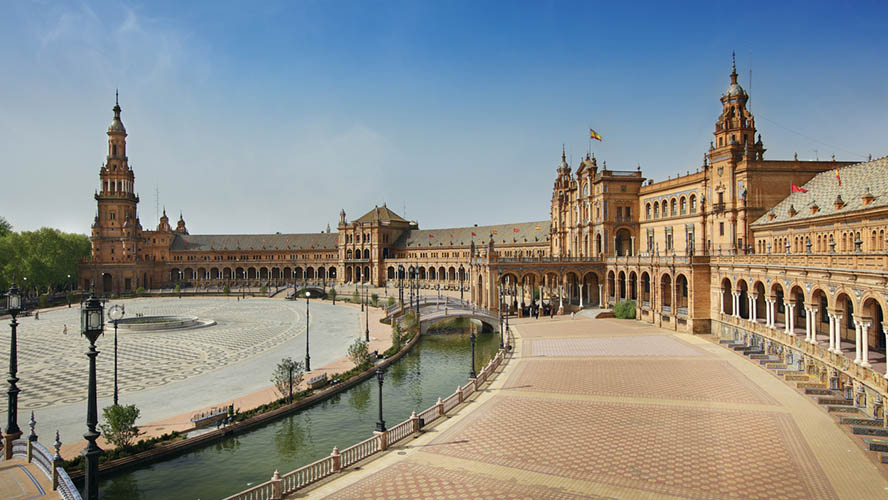
3. María Luisa Park, Seville
Opposite the Plaza de España lies Seville’s most important park, the great green lung of the city. The María Luisa Park has been declared an Asset of Cultural Interest in the Historic Gardens category. It opened in 1914, and initially formed part of the Palace of San Telmo’s private gardens. The park is named after the Infanta María Luisa Fernanda, who gave the gardens to the city. Particularly eye-catching are the fountains of the Frogs and of the Lions, and the Island of Ducks. In the grounds of the park stand the Seville Archaeological Museum and the Museum of Traditional and Folk Arts.
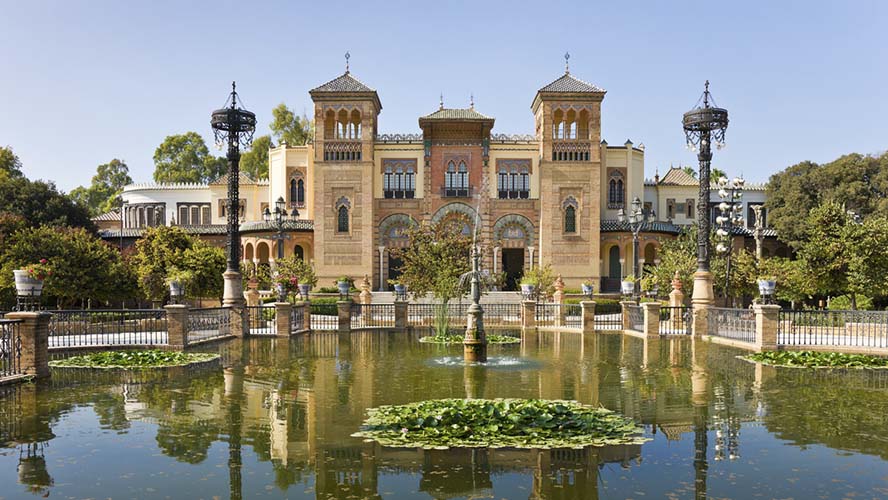
4. Torre del Oro [Golden Tower]
This tower is known as “Seville’s pretty little girl”. The Torre del Oro [Golden Tower], which stands on the banks of the river Guadalquivir, was built in the thirteenth century with the aim of strengthening the city’s military defences. The Moors also used the tower to control the river traffic. To do so, they used an enormous chain to link the Torre del Oro with another tower that stood on the opposite bank. Nowadays, the tower houses the Naval Museum, with a display of scale models and ancient navigation tools. From the top, you can see lovely views of the Triana neighbourhood, the Cathedral, and the Guadalquivir. Paseo de Christopher Columbus, s/n.
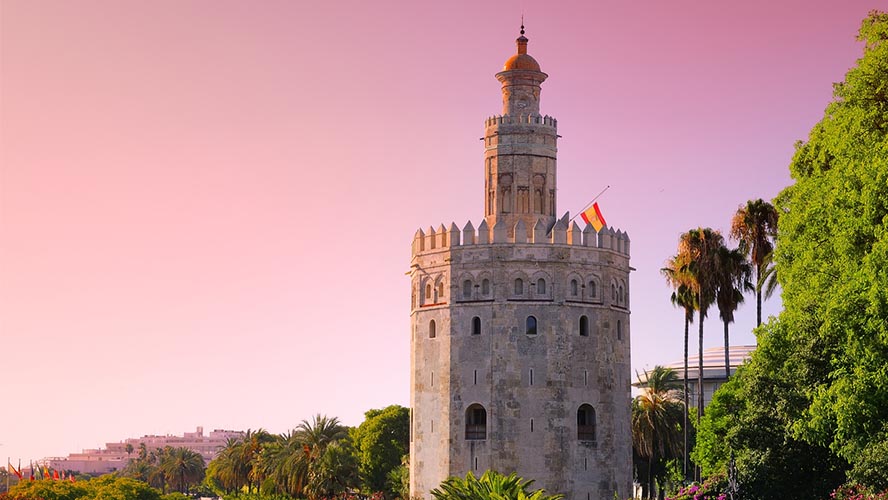
5. Metropol Parasol
Also known as Las Setas [The Mushrooms], the Metropol Parasol is a strange viewing point. Built in 2011, the avant-garde architecture of this wooden structure resembles six huge mushrooms or umbrellas. It is completely unrelated to traditional Andalusian style, so it brings a touch of originality and modernity to the classicism that dominates the city. The upper section of the building commands 360º panoramic views. Plaza de la Encarnación, s/n.
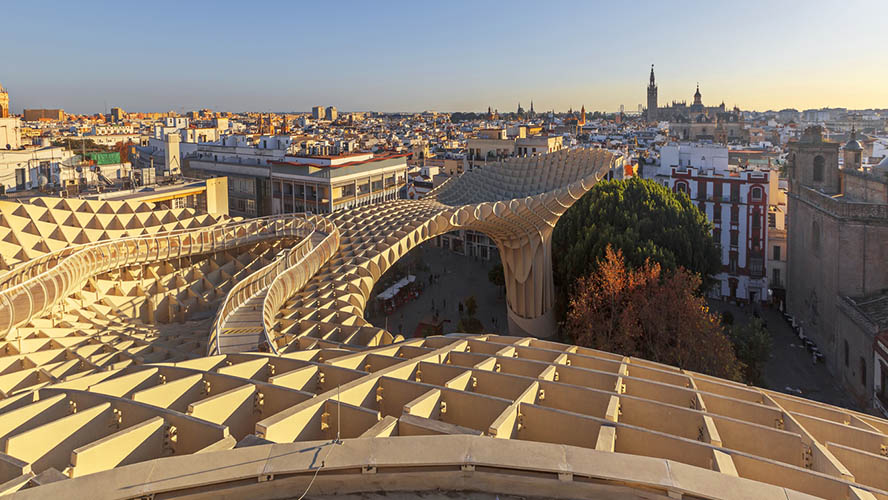
6. Isla de la Cartuja
Strictly speaking, the Isla de la Cartuja is not an island. It was in this area, almost surrounded by the river Guadalquivir, that the 1992 World Expo was held in 1992 — and some of the pavilions built for that event can still be seen. Crossing a wooden walkway brings you to the American Garden, an exotic botanical garden with over 300 species of plants originating from the Americas.
Also on the island is the monastery of La Cartuja or the monastery de Santa María de las Cuevas, which dates from the fifteenth century, and is now the Centro Andaluz de Arte Contemporáneo [Andalusian Centre for the Contemporary Arts]. There is also a theme park, Isla Mágica, and a water park, Agua Mágica. Both are perfect if you are visiting Seville with children.
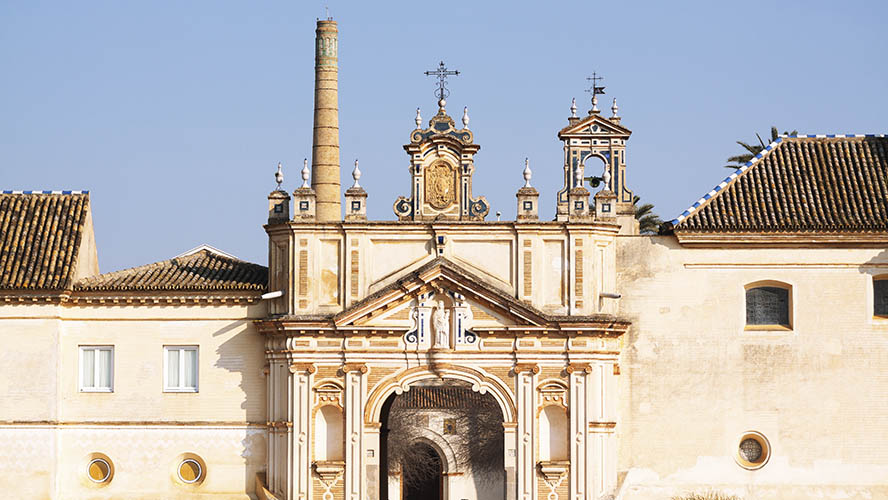
7. La Maestranza de Sevilla
La Maestranza de Sevilla is the city’s bullring, and every year at the time of the April Feria, one of Spain’s most important bullfighting festivals is held here. The yellow and white bullring is small and attractive, and its Puerta del Príncipe [Prince’s Entrance] is the one through which all the bullfighters dream of walking. Andalusia has a very strong bullfighting tradition. Inside the Bullring is the Museo Taurino [Museum of Bullfighting], open to the public. Paseo de Cristóbal Colón, 12.
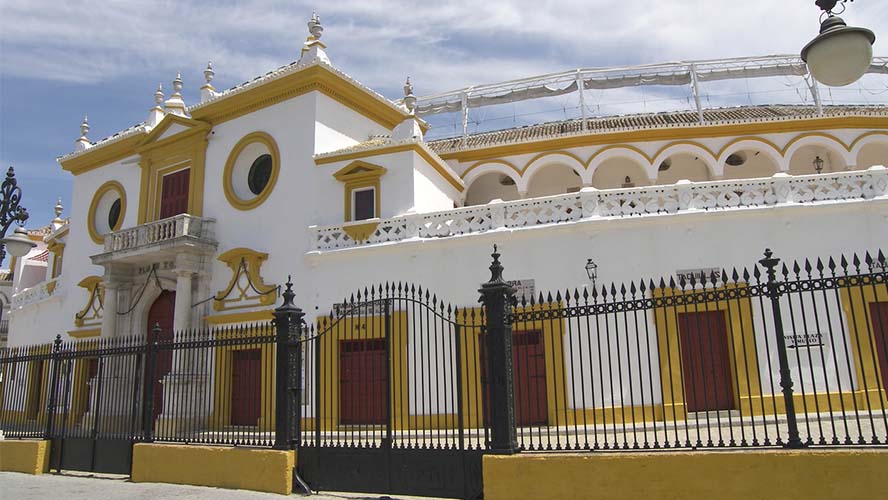
8. Seville’s Real Alcázar
Seville’s Real Alcázar is right next to the Cathedral and has been declared a UNESCO World Heritage Site. This is where the Spanish royal family stays when on official visits to Seville. It is a former Moorish palace with luxurious and majestic decoration. The enormous gardens have fountains, and the buildings themselves feature Mudejar, Gothic, Renaissance and Baroque art — evidence of the palace’s long history. This is an essential visit on any trip to Seville, because it is a veritable explosion of art and culture. Patio de Banderas, s/n.
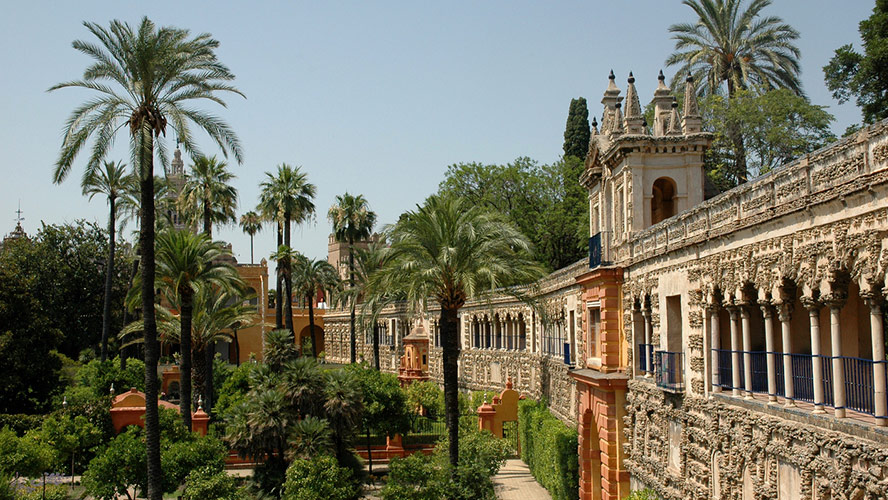
8. Basílica de la Macarena
The La Macarena Basilica, officially called the Basílica de Santa María de la Esperanza Macarena, is one of Seville’s best-loved churches. Located in Calle Bécquer in the La Macarena neighbourhood, this is the official headquarters of the La Esperanza Macarena religious brotherhood. Every year, in the early hours of Good Friday, this brotherhood leaves the basilica to process through the city with the images of the church’s patron virgin and of Nuestro Padre Jesús de la Sentencia.
This basilica was built in 1941 and blessed in 1949 to house the brotherhood’s images, which had been held in the chapel of the Parroquia de San Gil until it burnt down in 1936. The project was directed by the Seville architect Aurelio Gómez Millán, who designed it as a Baroque-style building with a single nave, a barrel vault, and four side chapels. The status of minor basilica was an honour conferred by Pope Paul VI in 1966.
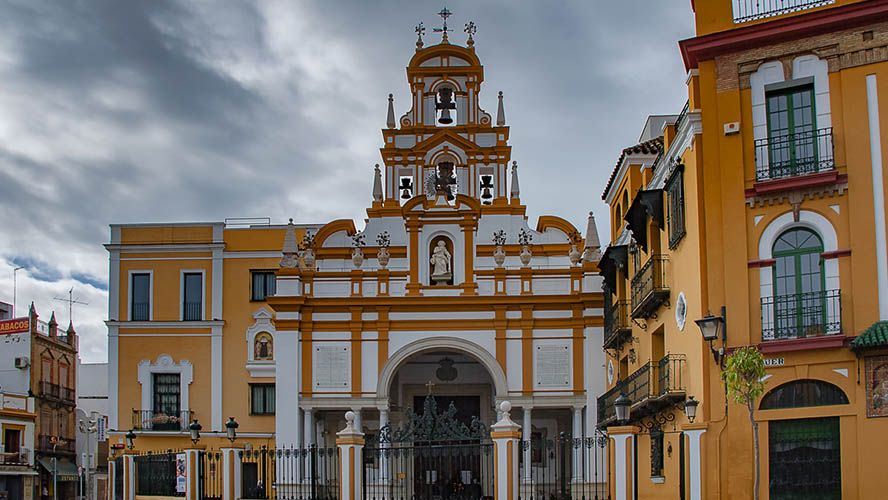
The basilica is a majestic edifice with its entrance arch and lintel supported on marble columns. Two of the outstanding features of the interior are the marble embellishments and the frescoes of the Virgin Mother by Rafael Rodríguez. In the presbytery and side chapels can be seen gilded wooden altarpieces, made in the workshop of Juan Pérez Calvo. The High Altarpiece features a niche in gold work, by Fernando Marmolejo Camargo, and dedicated to the Santísima Virgen de la Esperanza.
The side chapels are dedicated to images of Nuestro Padre Jesús de la Sentencia, the Virgin of the Santo Rosario, Cristo de la Salvación, and the Patrons of Hispanic America.
9. Palacio de Dueñas
The Palacio de las Dueñas is well worth visiting if you are interested in learning about life in this type of home in Andalucía, thanks to its glamourous history over the past centuries. Famous figures such as the Empress Eugénie de Montijo, Alfonso XIII, Jacqueline Kennedy, Grace Kelly and Prince Rainier of Monaco, Edward VIII and his brother George VI, and the English politician Lord Holland, have all either lived or stayed as guests in this mansion. Not to mention Antonio Machado, who lived here for eight years a century earlier, in the nineteenth century, due to the fact that his father Antonio Machado Álvarez was the building’s administrator.
This palace, dating back to the fifteenth or sixteenth century, and which we are now fortunate enough to visit, takes its name from a nearby monastery no longer in existence. The mansion was originally the home of the Pineda family, of the Casa Bermeja estate, one of Seville’s ancient noble families. It was inherited by Fernando Enríquez de Ribera, the second Marquis of Villanueva del Río and father of Antonia Enríquez de Ribera. In 1612, she married Fernando Álvarez de Toledo, the future sixth Duke of Alba. This list of names explains how the palace has now passed to the House of Alba.
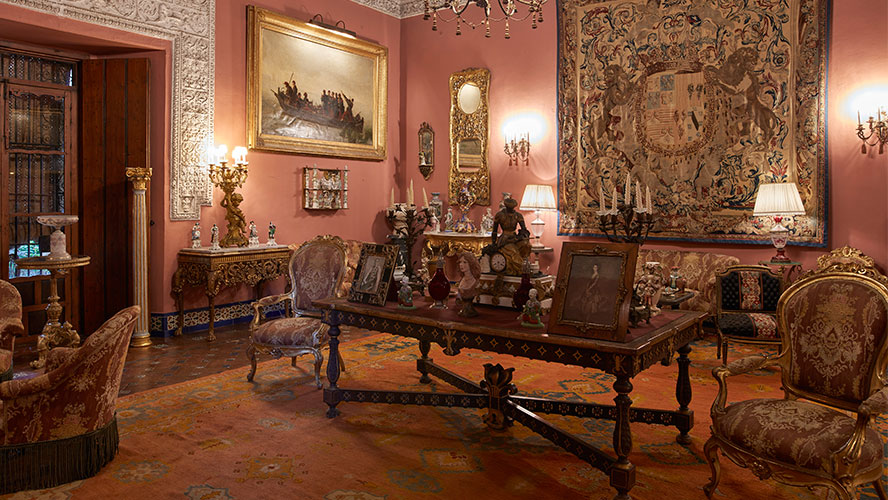
What can you expect to see on your visit? A tour of the Palacio de las Dueñas offers the opportunity to see the layout of this type of dwelling, with its abundance of courtyards, gardens, stables, chapels, and reception rooms. Touring a place with so much history is definitely an experience to be savoured.
10. Casa de Pilatos
Also known as the house of Alcalá de los Gazules, this impressive palace stands at no 1, Plaza de Pilatos, and dates back to the fifteenth century, and the joining of two noble family lineages: Enríquez and Ribera, who maintained a close relationship with Italy and loved Renaissance art. The true founder of the House, and the figure behind the social ascent of the lineage, was Per Afan de Ribera “el Viejo” [‘The Elder”]; however in the mid nineteenth century, this building (the actual name of which is the Palacio de los Adelantados Mayores de Andalucía) was comprehensively remodelled. This saw the incorporation of Romantic elements and features. Visitors will enjoy the excellent craftsmanship on display here, as well as the first Duke of Alcalá’s classical sculpture collection.
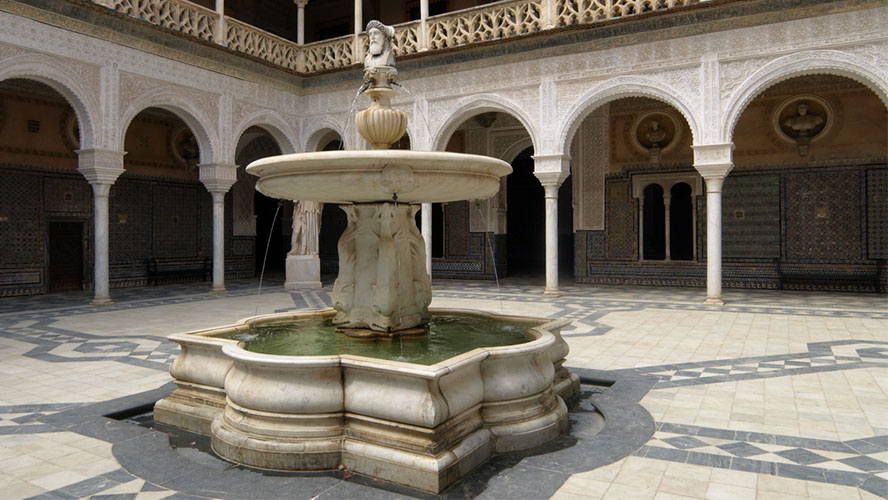
Four Hollywood blockbusters have been filmed at the Casa de Pilatos: “Lawrence of Arabia”, the winner of 7 Oscars; “Knight and Day”, with Tom Cruise; and two films directed by Ridley Scott: “1492: The Conquest of Paradise” and “The Kingdom of Heaven”. This emblematic building belongs to the House of Medinaceli, and its magnificent interior is open to the public every day from 9.00 a.m. until 6.00 p.m.
11. Hospital de los Venerables
The former Hospital de los Venerables Sacerdotes [Hospital for Venerable Priests] in the Santa Cruz neighbourhood was funded for over three centuries to house and care for old and disabled clergymen, but lost that role in the 1970s. Since 2007, the building has been home to the famous Velázquez Centre, an organisation that undertakes in-depth research into the works of Velázquez, and disseminates learning about him — and about other Baroque artists such as Murillo, Martínez Montañés, and Pedro Roldán.
The Hospital’s exhibition spaces are organised around its courtyards. It is worth noting the church where the sick priests received the sacraments and spiritual care. It was built in the late seventeenth century with the assistance of painters including Murillo and Valdés Leal, and sculptors such as Pedro Roldán. Pay special attention to the frescoes around the domes and cupolas, which were undertaken using the trompe l’oeil technique with scenes designed by Juan de Valdés Leal and painted by his son Lucas Valdés.
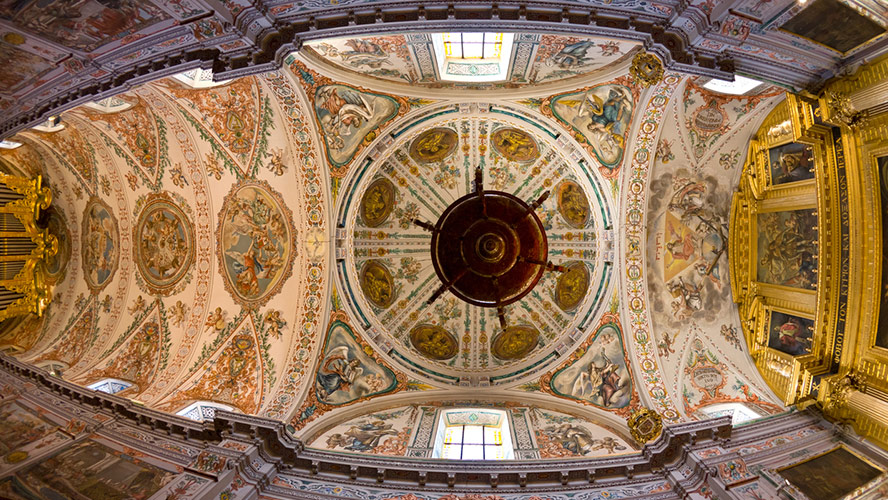
Interestingly, visitors can enjoy another great art collection (this time contemporary art) in the Hospital de los Venerables, in one of the building’s former infirmaries where works by artists including Carmen Laffón, Ramón Gaya, Luis Gordillo, and Pérez Villalta are displayed.
It is important to remember that the site on which the Hospital de los Venerables was built was previously occupied by the Doña Elvira ‘corral’ [open-air] theatre. Here, performances took place of plays by Lope de Vega, Tirso de Molina, and Miguel de Cervantes, and were a source of popular entertainment during the sixteenth and seventeenth centuries.
12. Fábrica de Tabacos de Sevilla [Seville Tobacco Factory]
Built in the eighteenth century to house Europe’s first tobacco factory, this monumental edifice evokes the story of the famous cigar-maker in Bizet’s opera, Carmen. Since the mid twentieth century, however, the building has been home to the University of Seville’s governing board and a number of university departments.
The Real Fábrica de Tabacos de Sevilla stands close to the Puerta de Jerez and the Convento de San Diego, and has a rectangular floor plan. Nowadays, it is considered to be Spain’s most important building of the eighteenth century, and only the El Escorial Monastery is larger. Richard Ford, on his visit to Seville, described the building as the “Escorial tabaquero” [the tobacco industry’s Escorial]. The building is surrounded on three sides by a moat, and the Baroque influence can clearly be seen on its main façade. Each side of the building has a double-column façade, with a statue above representing Fame. Since 1959, this edifice has enjoyed the status of an Asset of Cultural Interest, in the Historic Monuments category.
Seville neighbourhoods to explore
1 Neighbourhood of Triana
The Triana neighbourhood, on the banks of the river Guadalquivir, is one of Seville’s emblematic places. Its origins were humble, but its character and culture have extended far and wide. This is the cradle of many flamenco singers and dancers, of exponents of the plastic arts, of bullfighters, and of fashion designers. Art permeates each and every one of its streets, and its people are known for their good humour. The river bank is packed with tapas bars, restaurants, the flamenco venues known as ‘tablaos’… Calle de la Pureza leads to the Virgin of Triana, revered by Seville’s inhabitants, and access to Triana is via the bridge, the Puente de Triana.
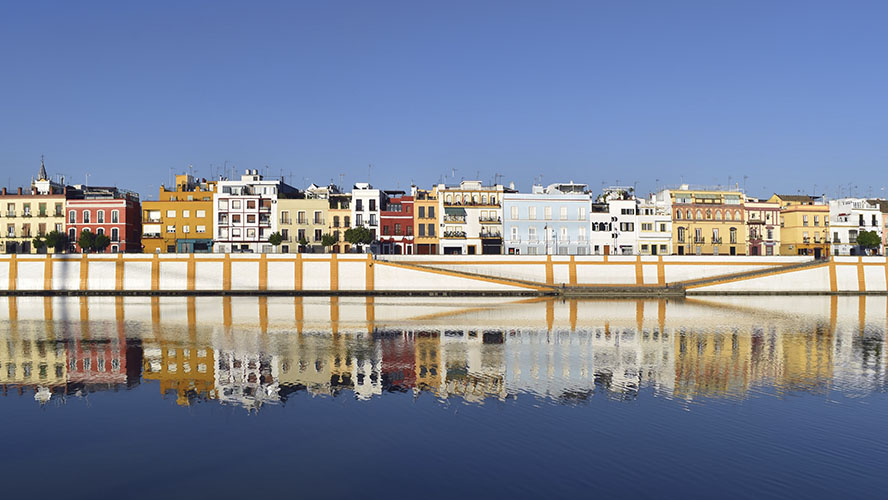
2. The Santa Cruz neighbourhood
This is the main focus of tourist activity in Seville, as it lies within the city’s historic quarter, and contains a high concentration of historic monuments. Meander along Santa Cruz’s pedestrianised streets, enjoy a coffee or a tapa at one of its many terraces, admire its ancestral mansions with their typical courtyards and entrance halls, browse in its innumerable souvenir shops, and discover its charming squares.
Santa Cruz was once a Jewish neighbourhood, and its labyrinthine narrow streets keep the quintessential character of Seville alive. The remains of Murillo are laid to rest in the Plaza de Santa Cruz. You can enjoy a flamenco show in one of Santa Cruz’s many ‘tablaos’.
3. The El Arenal neighbourhood
El Arenal is particularly popular with travellers visiting Seville for its culture. It is bounded to the east by the Cathedral; to the south by the Cristina Gardens, and to the north by Calle Reyes Católicos. This street is home to monuments such as the Cathedral, the Torre del Oro, the La Maestranza bullring, and the Marques de Contadero Gardens, close to the Guadalquivir.
The great advantage with Seville is that the sights are all close at hand, and it is easy to access neighbourhoods such as these, to wander around and to absorb their unique atmosphere. Chapels, theatres, markets and many terraces do not need to be sought out — they are all right there in front of you. A piece of advice for experiencing the city like a true ‘sevillano’ is to space out your sightseeing visits, interspersing them with stop-offs at traditional bars and eateries where you can try the local cuisine. Moving from bar to bar sampling different tapas is a popular custom in this city, so visit the Cathedral and the Giralda, move on to the Torre del Oro, and then relax for a while on the bank of the Guadalquivir, a particularly pleasant spot in summer. And in the evening, take the opportunity to enjoy the illumination on the bridges on a stroll along the river bank.
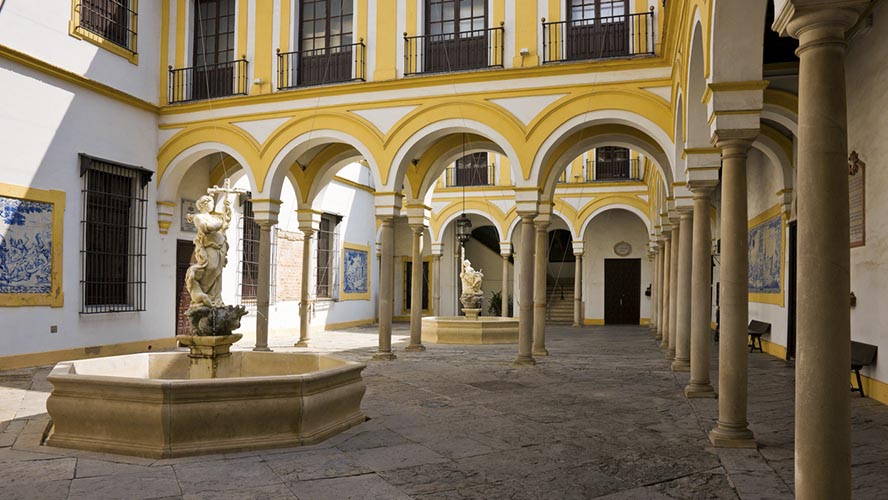
Seville’s Museums
1. Archivo de Indias
The Archive of the Indies was built on the orders of Carlos III in 1785. It was built in order to gather and centralise all the administrative documentation relating to Spain’s overseas territories which, until then had been held by many different archives and organisations. The Archive of the Indies is located near the Alcázar and the Cathedral, and although it is not really a tourism-focused place, it is worth visiting on account of its interesting architecture and the memory of its glorious past. Avenida de la Constitución, s/n
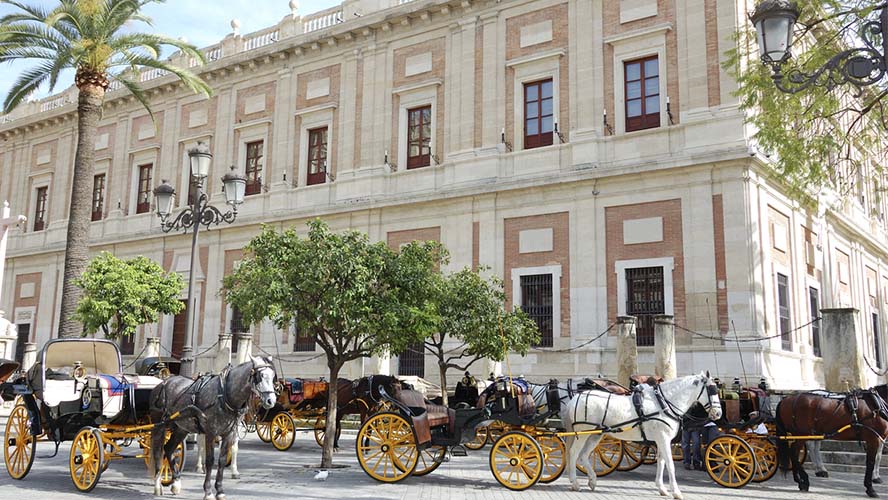
2. CaixaForum Sevilla
The Archive of the Indies was built on the orders of Carlos III in 1785. It was built in order to gather and centralise all the administrative documentation relating to Spain’s overseas territories which, until then had been held by many different archives and organisations. The Archive of the Indies is located near the Alcázar and the Cathedral, and although it is not really a tourism-focused place, it is worth visiting on account of its interesting architecture and the memory of its glorious past. Avenida de la Constitución, s/n
Although the outside of the centre is fairly unremarkable, it covers an area of 7,500 m2, divided between two exhibition rooms, an auditorium, two multi-use classrooms, a shop and bookshop, and a snack bar. The person charged with designing the installation to house this museum was Guillermo Vázquez Consuegra, a Seville architect who also transformed the space with additions such as a canopy made from aluminium foam over the entrance. In fact, his project won the 2018 Building of the Year Award, an accolade conferred by Archdaily, an internationally renowned architecture portal.
The first floor of the Seville CaixaForum houses the administrative offices and the restaurant, and the exhibition rooms and the auditorium are on floor -1, i.e., on the level below the square from which the building is accessed. The centre offers guided visits and workshops, along with interesting temporary exhibitions that are advertised beforehand on its website.
3. Museo del Baile Flamenco [Museum of Flamenco Dance]
The innovative Flamenco Dance Museum was developed by Cristina Hoyos, one of the great flamenco dancers. This is an essential cultural visit for anyone who wants to understand and appreciate flamenco dance (and flamenco in general). It is housed in a historic building in the Santa Cruz neighbourhood, one of the hotbeds of flamenco in Andalusia.
The building combines exhibition rooms with more interactive facilities offering classes and workshops, a room where a daily flamenco performance takes place, relaxation areas, and a souvenir shop.
It is in an area that is closed to traffic (c/ Manuel Rojas Marcos, 3), so the best way to get there is to use the tram service, alighting at the Archive of the Indies stop, or take the metro to Puerta de Jerez, which is about 10 minutes’ walk from the museum.
4. Seville’s Fine Arts Museum
Seville’s Fine Arts Museum is Spain’s second most important art museum, after the Prado Museum. Here you can see works by Zurbarán, Velázquez, Valdés Leal and, of course Murillo, to whom this museum is a shrine. The museum’s collections will take you on a journey through the Baroque, the Renaissance, medieval art, and nineteenth-century art.
Most of the exhibits are paintings, but there are also sculptures, ceramics, and decorative art works. The building that houses the museum is the former Convento de la Merced Descalza, dating from the thirteenth century. The square next to the museum has a bronze sculpture dedicated to Murillo. Plaza del Museo, 9.
At Barceló Experiences, you can continue your tour of Spain’s magical attractions by taking a look at our tourist guides to other essential destinations, including Madrid, Cádiz, Asturias, Valencia, Barcelona and Granada.
Where to stay in Seville
Seville is one of Spain’s most popular tourist cities so, as you might expect, it offers a wide range of accommodation to suit all types. However, we can recommend a few hotels that will definitely make your stay an unforgettable experience in the home of the Giralda. These places also offer excellent value for money:
Occidental Sevilla Viapol
The four-star Occidental Sevilla Viapol hotel is a superb choice whether you are travelling as a family, as a couple, or with friends. It is located in the Nervión district, a residential area with excellent links to all Seville’s tourist attractions, such as the Santa Cruz neighbourhood, and the Plaza de España. The hotel has modern guest rooms offering every comfort and convenience. Its other facilities include the outstanding Arrozante restaurant specialising in rice dishes, an outdoor, temperature-regulated swimming pool, a car park, and 5 meeting rooms.
Barceló Sevilla Renacimiento
One of Seville’s most emblematic hotels, thanks to its architecture and design, which are reminiscent of New York’s Guggenheim Museum. The Barceló Sevilla Renacimiento stands on the banks of the Guadalquivir, a stone’s throw from the famous Alameda de Hércules, and from the AVE railway station. The hotel’s 295 guest rooms enjoy excellent natural light, and its bars and restaurants offer a fantastic range of cuisine. In addition, the hotel has a fitness room and 25 meeting rooms for all kinds of events.






























































